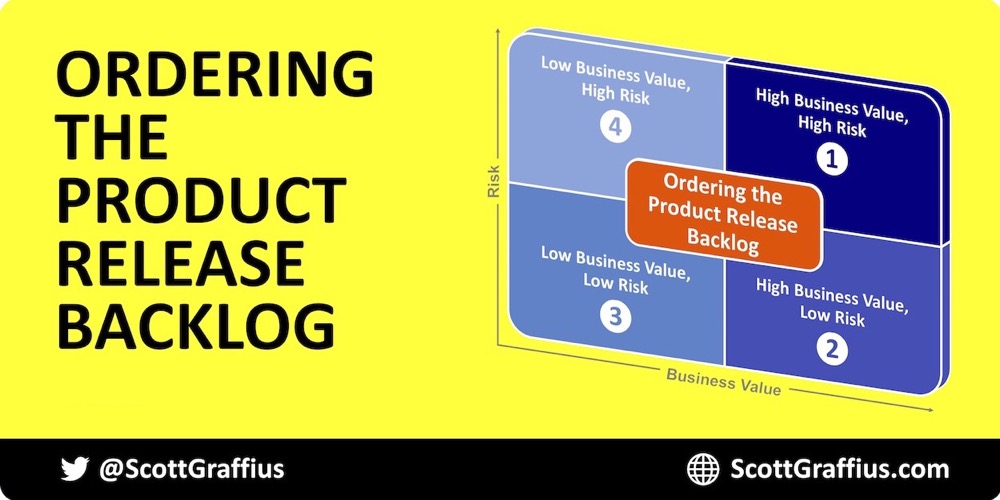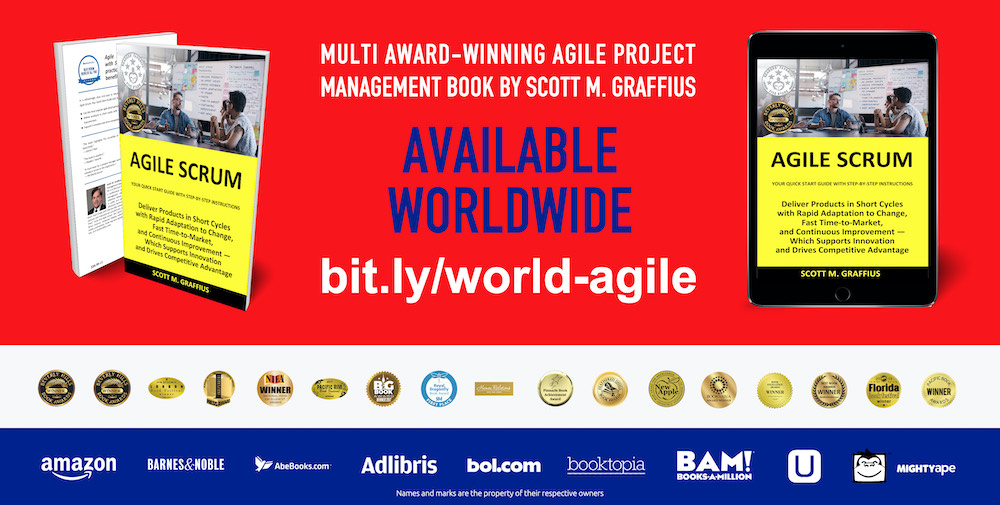Product Backlog - Agile
Product Backlog Ordering Technique: Factoring Business Value and Risk
16 January 2018

Scrum is the most popular agile project development and delivery framework. In Scrum, the product release backlog (sometimes referred to as the product backlog) is a list of features, user stories, bugs to be fixed, and/or other requirements. The Product Owner is the ultimate holder of the backlog. The Product Owner prioritizes items, and different methods can be employed to help accomplish that work. This brief article focuses on the technique of factoring business value and risk.
Each item in the product release backlog would be rated as either high or low in two dimensions: business value and risk. It is suggested that high business value, high-risk items are worked on first. While that may seem counterintuitive, the earlier this work is done, the sooner the team will move to mitigate the issues and unknowns—leading to a higher quality product. If there's a failure, it will occur early and relatively inexpensively.
An ordering of priorities is illustrated above, and it follows:
1. High business value, high risk.
2. High business value, low risk.
3. Low business value, low risk.
4. Low business value, high risk.
Alternatively, other prioritization methods—such as the MoSCoW ranking model— may be used. MoSCoW will be highlighted in a subsequent article.
This content is an abridged excerpt from the award-winning book, Agile Scrum: Your Quick Start Guide with Step-by-Step Instructions, available in paperback and ebook formats.

The ebook (ASIN: B01FZ0JIIY) is available in:
- Australia,
- Brazil,
- Canada,
- France,
- Germany,
- India,
- Italy,
- Japan,
- Mexico,
- the Netherlands,
- Spain,
- the United Kingdom, and
- the United States.
The paperback (ISBN-13: 9781533370242) is for sale at:
- Amazon,
- Barnes & Noble,
- Strand Books,
- Harvard Book Store,
- Books-a-Million,
- The Booksmith,
- Hudson Booksellers,
- Savoy Bookshop & Café,
- Compass Books at SFO/Books Inc.,
- Books & Books - Miami,
- University Press Books - Berkeley,
- and other retailers and partners in the United States and around the world.

© Copyright 2018 Scott M. Graffius. All rights reserved. This material may not be published, broadcast, rewritten or redistributed without the express written permission of Scott M. Graffius.

